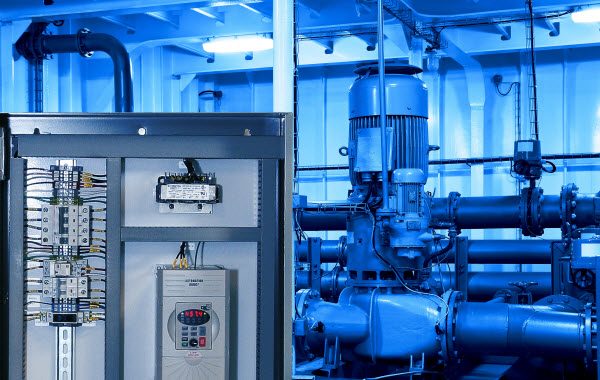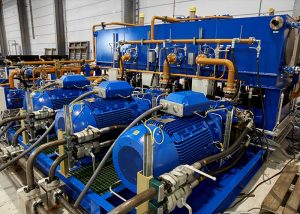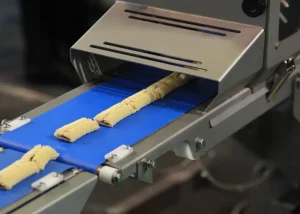The world of industrial electric motors and applications is a place where businesses rely on their equipment to function. Variable frequency drives are used in motor applications like pumps and forced draft fans for fluid and airflow control. Businesses rely on VFDs to keep production lines moving. When production stops or slows due to a mechanical failure, the pressure is on to fix the problem and resume efficient production.
Variable-Frequency Drive (VFD) controls the speed of a motor by varying the frequency and voltage; this controller also can ramp up or down the motor during start or stop. The VFD controls the speed of an alternating current (AC) motor by varying the frequency supplied to the motor. It does this by converting an AC supply voltage into direct current—a process involving the use of rectifiers and capacitors to smooth out any voltage ripples—and then switching on and off a DC bus using insulated gate bipolar transistors.
VFDs are used in many different applications, from small household appliances to industrial compressors. Since 25% of the world’s electrical energy is consumed by electric motors in industrial applications, VFDs can increase the overall efficiency of fluid flow systems.
Variable frequency drives help protect industrial motors from damage caused by events like power outages and other emergencies, as well as by overloads. They also save energy when flow pressure is decreased and allow a bypass capability to protect equipment.
Troubleshooting a VFD system can be rewarding and often effective when you take the following steps.. The troubleshooting tips below are courtesy of our friends at CaTS, who offer high-quality repair services and other products needed as you work to keep downtime to a minimum.
- Start with a visual inspection. If you see water running, dripping, or clogged filters, check for excessive temperatures and contamination on the equipment.
- Be sure to check for any system error messages. Does the VFD turn on? Are there lights?
- Be sure to check any connections that might have worked loose. Continual heating and cooling can cause a wire to lose contact with a terminal. If the connections seem loose, test them with an ohmmeter.
- To check line voltages and current to the drive, check the voltages and currents at the drive. The line voltages should be within five percent of each other. Although a drive may still operate with a blown fuse from its power supply, it is safer to replace any blown fuses on the drive itself.
- Check the voltages and currents of the drive, and make sure they balance. An oscilloscope can help you to inspect the voltage waveforms. Use a megohmmeter to test the motor’s continuity by disconnecting it from the drive. The megohmmeter is an instrument used for measuring high resistance values by sending a high voltage signal into the motor and measuring the current flowing to ground. If the VFD is left connected to the motor, the high voltage signal from the megohmmeter will likely destroy or weaken it.
- If the drive is having trouble starting, check to see if there are any parameters that have been changed on the drive or if it has been reset to factory settings. Sometimes, human error causes a machine operator to accidentally change the parameter. If this happens, the operator may attempt to reset the drive’s parameters to factory presets, but these may not match those of the original application. The user could then replace the drive with a new one and copy over old settings so that it would work correctly. In this case, though, the load was hard to start because of underpowered motors, so the torque boost was raised and a few other parameters were altered until the problem was solved.
In hazardous environments, the safe application of variable frequency drives (VFDs) is still a growing challenge. However, many companies are beginning to look for solutions. Before adding VFDs to a new or existing application, it is important to understand your application’s challenges. Then, select a VFD that is safe and complies with applicable regulations.





